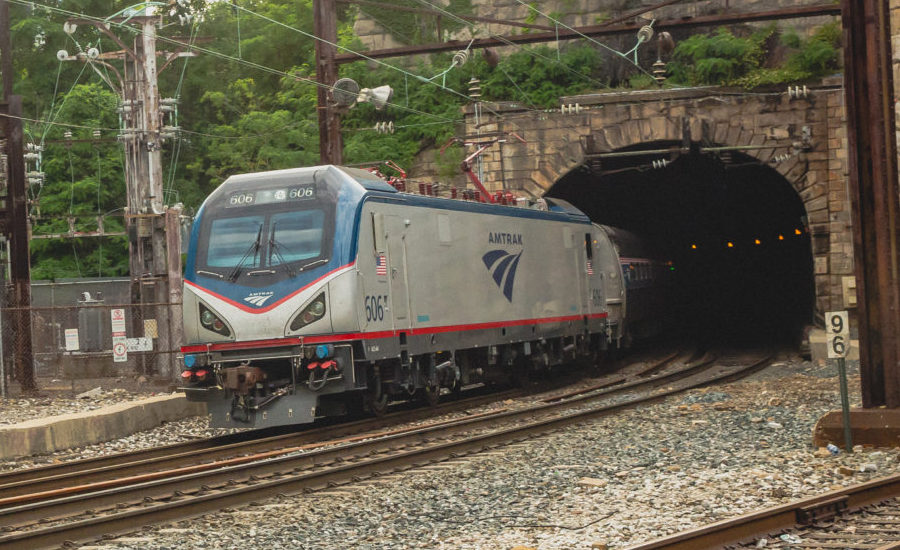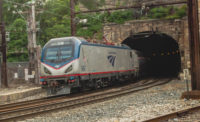It was clear from a Dec. 9 House Transportation and Infrastructure subcommittee hearing that passenger rail carrier Amtrak is one of the biggest winners under the wide-ranging infrastructure package signed into law on Nov. 15. Its overall funding is estimated at $1 trillion to $1.2 trillion.
[View video of hearing and see witnesses' prepared statements here.]
Members of the railroads, pipelines and hazardous materials subcommittee and witnesses at the hearing said the recently enacted measure contains about $100 billion for passenger rail, including $66 billion in appropriations and $35 billion in authorizations, which would require appropriations in the future.
Full committee Chair Peter DeFazio (D-Ore.) called the infrastructure legislation “revolutionary” and said it will provide “guaranteed and robust funding for the next five years.”
Subcommittee Chair Donald Payne (D-N.J.) said the $66 billion in IIJA Amtrak appropriations is about equal to the total Congress has appropriated for the railroad since it was created in 1971.
Amtrak President Stephen Gardner said that, thanks to that $66-billion infusion, “we and our [state] partners can finally have the chance to renew, improve or replace antiquated assets like the century-old bridges and tunnels in the northeast, inaccessible stations around the nation and our vintage trains.”
Gardner said that of the $66 billion in appropriations, Amtrak, whose formal name is the National Railroad Passenger Corp., will receive $22 billion directly.
The rest will go to the Federal Railroad Administration (FRA). The agency's allocation includes $36 billion that it will award on a competitive basis through an updated version of the agency’s existing federal-state partnership grants program. The rest of its $44 billion in appropriations includes $5 billion for its Consolidated Rail Infrastructure and Safety Improvements program; and $3 billion for projects to eliminate grade-crossings. Passenger rail projects will be eligible to compete for those funds.
An agency official said in emailed comments that "it would be premature to estimate when funds for Amtrak or the competitive discretionary grant programs will be released."
The official added that the agency will release funding-availability notices regarding the IIJA-authorized grant programs in the Federal Register "as they are available." Those notices will outline such things as what entities and projects are eligible for the grants and how to apply for them.
[View further Federal Railroad Administration information about the IIJA here and funding table here.]
Biggest Amount Goes to Northeast Corridor
Of Amtrak’s $22 billion in direct IIJA appropriations, Gardner said $6 billion is earmarked for the Northeast Corridor—the railroad’s busiest line—and $16 billion for long-distance routes and routes that also receive some funding support from states.
Gardner said that the Federal Railroad Administration federal-state grants will be the main funding source for major Northeast Corridor projects and will provide 80% federal funding shares for “critical once-in-a -century projects” on Amtrak’s list.
The agency funds will be supplemented by Federal Transit Administration aid.
Among the big Northeast Corridor projects that Gardner cited are a new $10-billion Hudson Tunnel between New Jersey and New York, a $4-billion replacement for the 147-year-old Baltimore and Potomac Tunnel in Baltimore and a $2.6-billion Susquehanna River replacement bridge—all of which are past their useful lives.
The corridor has a long list of possible projects. In July the Northeast Corridor Commission released a 15-year improvements plan totaling $117 billion. The commission said the additional funding needed to carry out the program is $100 billion.
Participants in the report included the Federal Railroad Administration, Amtrak, corridor states and eight commuter rail agencies.
The Hudson Tunnel is the largest element of a multi-project Gateway Program in the stretch of the Northeast Corridor from northern New Jersey to Manhattan.
It has been a priority for lawmakers from that region. Subcommittee chair Payne said the Gateway Program “is a collection of the nation’s most pressing infrastructure projects." He said a new tunnel is greatly needed, noting that the current one is 111 years old and “in an advanced state of decay due to its age and the damage sustained during Superstorm Sandy.”





